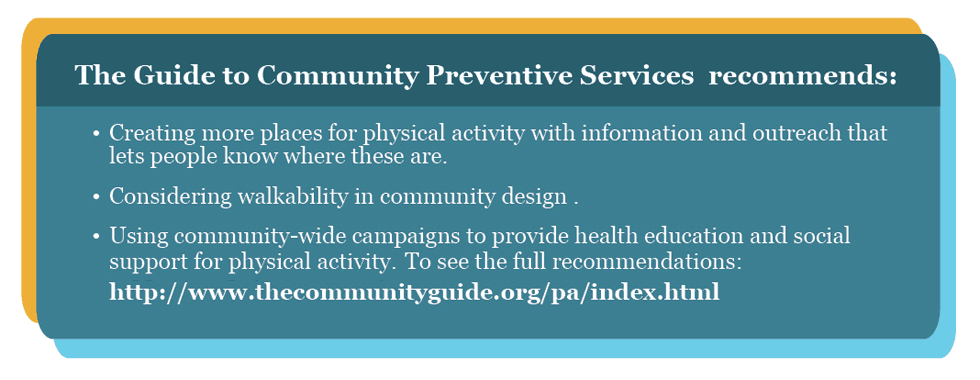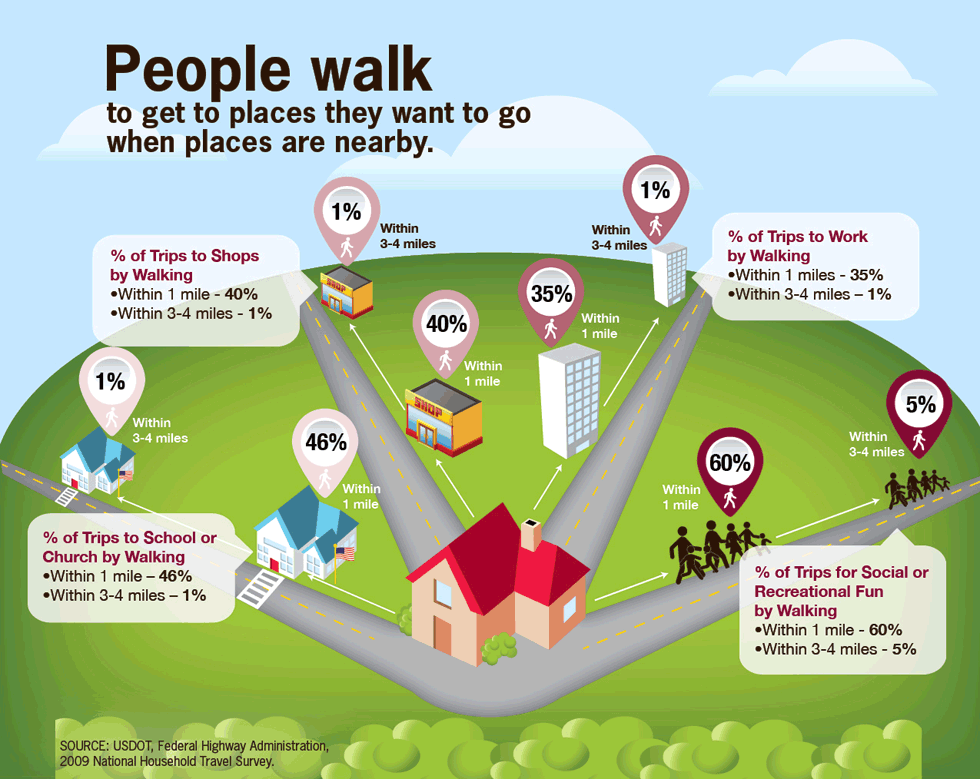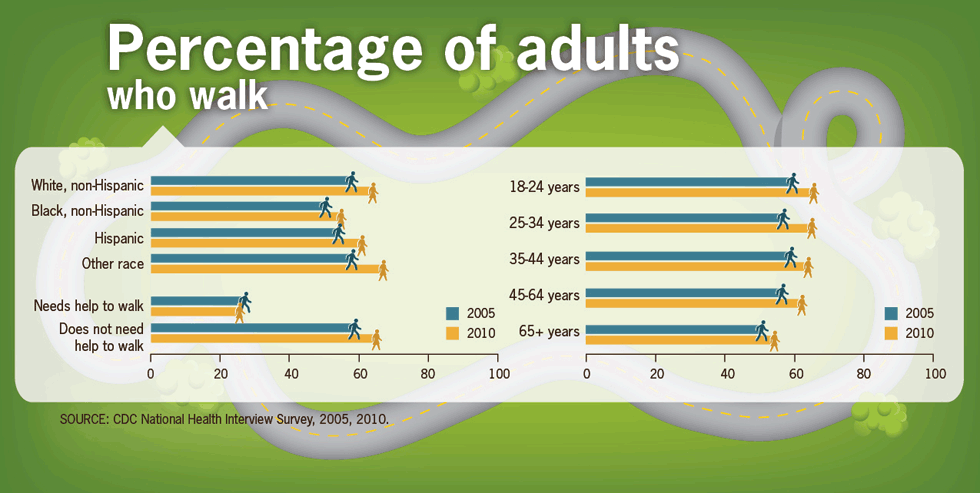More People Walk to Better Health infographic

The Guide to Community Preventive Services recommends:
- Creating more places for physical activity with information and outreach that
lets people know where these are. - Considering walkability in community design .
- Using community-wide campaigns to provide health education and social
support for physical activity. See the full recommendations.

Percentage of adults who walk: This chart shows the increase in the percentage of adults who walk by race, age, and whether they need help walking. All groups increased from 2005-2010.

This diagram shows that when destinations such as work (35%), school or church (46%), shopping (40%), fun (60%) that are within 1 mile, many more people walk than when these destinations are within 3-4 miles. Then the percent walking drops to 1%, unless they are walking for fun (5%).
- Page last reviewed: August 6, 2013
- Page last updated: August 6, 2013
- Content source:
Error processing SSI file


 ShareCompartir
ShareCompartir